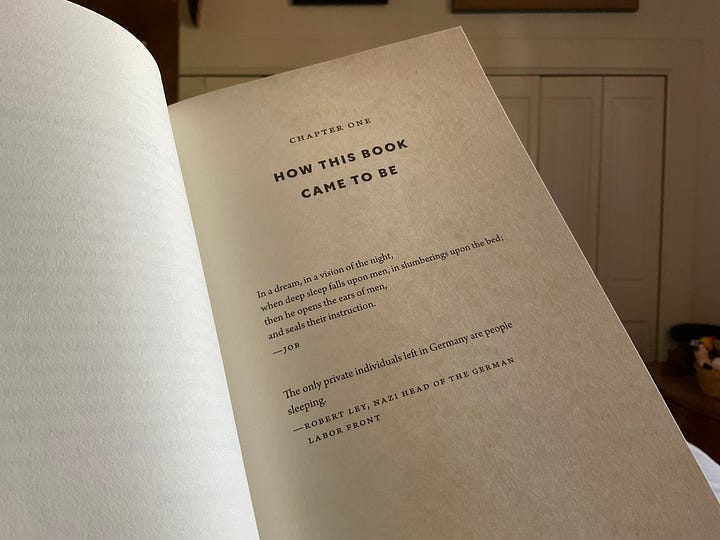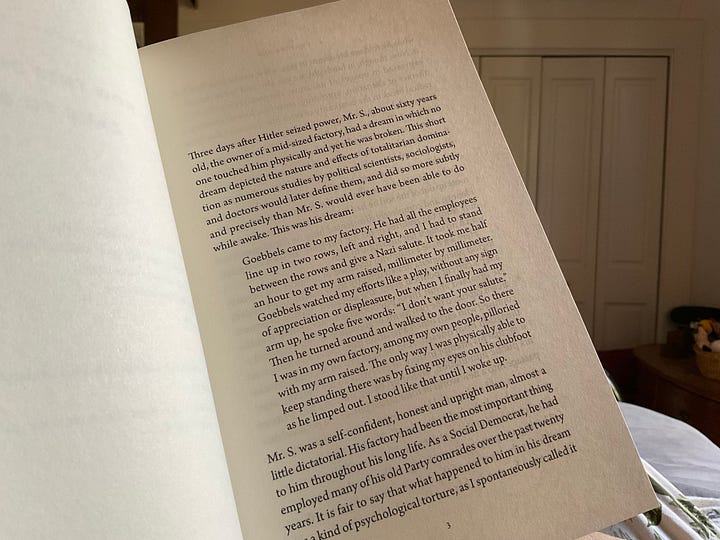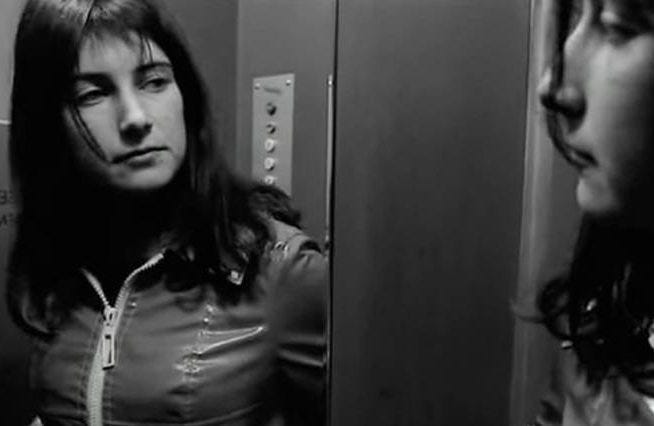I Won a Bloody Bet on The Gilded Age — and The Fourth Reich of Dreams
The Leisure Hours, August 7
TV
The Gilded Age Penultimate Episode - Attentat Rising
Those of us steeped American class violence were not in the least surprised to find our favorite robber baron, Daddy Russell, on the wrong side of a pistol at the close of Season 3.
What a cliff-hanger!
Listen to my audio link above, for all the details. This text version is the “shortie!”
Yes, I won a small bet — a soft-serve ice-cream dipped in chocolate. I’ve got to up the ante next time.
My fellow TV addicts asked me, “Susie, how did you know the leading man would be shot?”
My predictions were platinum, because all the characters in this popular series are based on real people, whose lives were even wilder and bloodier than the scenes we’ve witnessed so far.

The creator of The Gilded Age show, Julian Fellowes, is a connoisseur of the golden New York era, the 1860s-1890’s — a revolutionary whirlwind after the Civil War. Julian could write 20 seasons of The Gilded Age, and it would only scratch the surface.
It’s not just the rich who were breaking taboos — the working class was just as tumultuous. It was the time of the Black Bourgeoisie emergence. The social order took a jolt.
Keep in mind, this was long before the First World War, or the Bolshevik revolution. Yet Marxist ideas and anarcho-syndicalism were all the rage among organized labor, without any notion of the Cold War or “Russkies.”
I thought The Gilded Age character, “Mr. Russell” — a man modeled on Railroad Daddy Jay Gould, was going to meet his maker in Season 2. He was cruising for a bruising, with his calls for Pinkerton detectives and the National Guard, to bring his steel workers to heel. It was a close call.
The fin de siecle great accumulation of capital— and the simultaneous creation of mass poverty— saw a global political movement called Attentat: a French expression for “The Propaganda of the Deed.”
The theory was, if one bold martyr would assassinate a single capitalist-kingpin, it would inspire others, the masses, to rise up against their oppressors.
Naïve, you say? Old-fashioned?
Well, say hello to Luigi Mangione, who has single-handedly revived attentat last year by shooting UnitedHealthcare CEO Brian Thompson, leaving behind three empty shell casings reading "Deny," "Delay," "Depose."
Uncanny.
The reason viewers are gaga about Fellowes’ soap opera, is because the action is ripped from today’s headlines— goose-bumps-level.
I believe The Gilded Age television assassination is based on the 1892 plot of Alexander Berkman, Emma Goldman’s lover, to kill industrialist Harry Frick.
I doubt the series will get into Berkman’s tragic backstory, but it’s a doozy, and described in page-turning detail by Goldman in her own autobiography, as well as Berkman’s prison memoir.
Mr. Frick? He survived, and went on to murder and maim many of his own steel workers. His greed was also directly responsible for the Johnstown flood, “an industrial accident,” killing thousands. He would die an old man peacefully at home.
Would you like to learn more about the real-life people behind the Gilded Age characters? It makes the show’s viewing even more delicious.
Business Insider did a rather nice list, comparing characters to real life history.
Another juicy morsel:
The actor who plays Mr. Russell is the yummy Morgan Spector. Spector is a not-so-closeted socialist, who would’ve supported the workers against the robber barons without question.
Spector adores his character, (and his famous beard), but he has no illusions about the morality of the day! Variety magazine has been doing excellent interviews with Spector almost every week of the season; it’s worth a look.
Books
The 4th Reich of Dreams
There exist great books, where you race to read the last page and reflect in awe.
Then, there is The Third Reich of Dreams: the Nightmares of a Nation, 1933-1939.
You reach the final chapter, and realize you have to continue writing the book yourself.
Yes, this is a book of interviews with Germans during the rise of the Reich, who confided their sleeping nightmares, to a journalist named Charlotte Beradt.1
Their dreams were haunted by fascism, its inescapable detail.


The journal collection was first published in German in 1966, and now finally translated in 2025, by Princeton University Press.
The book’s opening quotation reads:
The only private individuals left in Germany are people sleeping.
— Robert Ley, Nazi head of the German Labor Front.
Was Ley being sarcastic, or making a factual observation?
The first dream in the journal is an interview with Mr. S, a small factory owner, a Social Democrat:
“Goebbels came to my factory. He had all the employees line up in two rows, left and right, and I had to stand between the rows and give a Nazi salute. It took me half an hour to get my arm raised, millimeter by millimeter.
“Goebbels watched my efforts like a play, without any sign of appreciation or displeasure, but when I finally had my arm up, he spoke five words: "I don't want your salute." Then he turned around and walked to the door. So there I was in my own factory, among my own people, pilloried with my arm raised. The only way I was physically able to keep standing there was by fixing my eyes on his clubfoot as he limped out. I stood like that until I woke up.”
Each dream, each person, is a revelation.
How close are we today to a 4th Reich?
Let us record our nighttime observations.
In Case You Missed It
Dreaming in Another Mother Tongue
I dreamt in French last night. It was tough-going. I had something important to say, but I kept butchering the words. My family stood in a circle around me, doubtful I’d ever get my message out.
Beradt was also Hannah Arendt’s translator.



I’m sure others have written dissertations on this, but there is an intriguing segue, theoretically and on the ground, between attentat and Guerilla warfare.
I first became aware of the power of guerilla warfare in northern Africa during the battle of Algiers in the 1950s. The movie, Battle of Algiers, tells it all in cinema.
The strategy of guerilla warfare was codified in the 1960s by Che Guevara in his book by the same name. It is a classic that is only surpassed in military strategy book sales by Sun Tzu’s “Art of War!”
I learned all this when I licensed Che Guevara’s backlist from his widow, to produce in audiobooks. I was floored by the perennial readership for “Guerilla Warfare.” It is read by the right and the left. Guevara wrote it as an instructional guide, and indeed, it has the tone of a Chess Master manual.
The difference between attentat and the guerilla approach is that the guerilla operates as a cell, a small unit, to take on a national target. —As opposed to a single person or cell that takes on one villain. They are not hoping to “inspire the masses” - it’s more of a vanguard mentality: “we know what to do and we’re going to get it done ourselves.” And, internationally, guerilla warfare was honed in the colonial struggle against imperialism; it has a different character than domestic labor and capital struggles.
Both theories are similar in the sense that they believe that a very small group of people can have an effect much greater than their numbers.
Perhaps some of you will tell me more!
Love this Susie! I’ve only just started watching but did get to the part where Gould says I could hire half the working class to kill the other half. He really did say that. Your analogy with Frick and Gpldman and Berkman is right on target. Did you know our favorite robber baron is a local? https://www.pressdemocrat.com/article/entertainment/morgan-spector-hbo-gilded-age/ From Sonoma county! And ACT in SF.